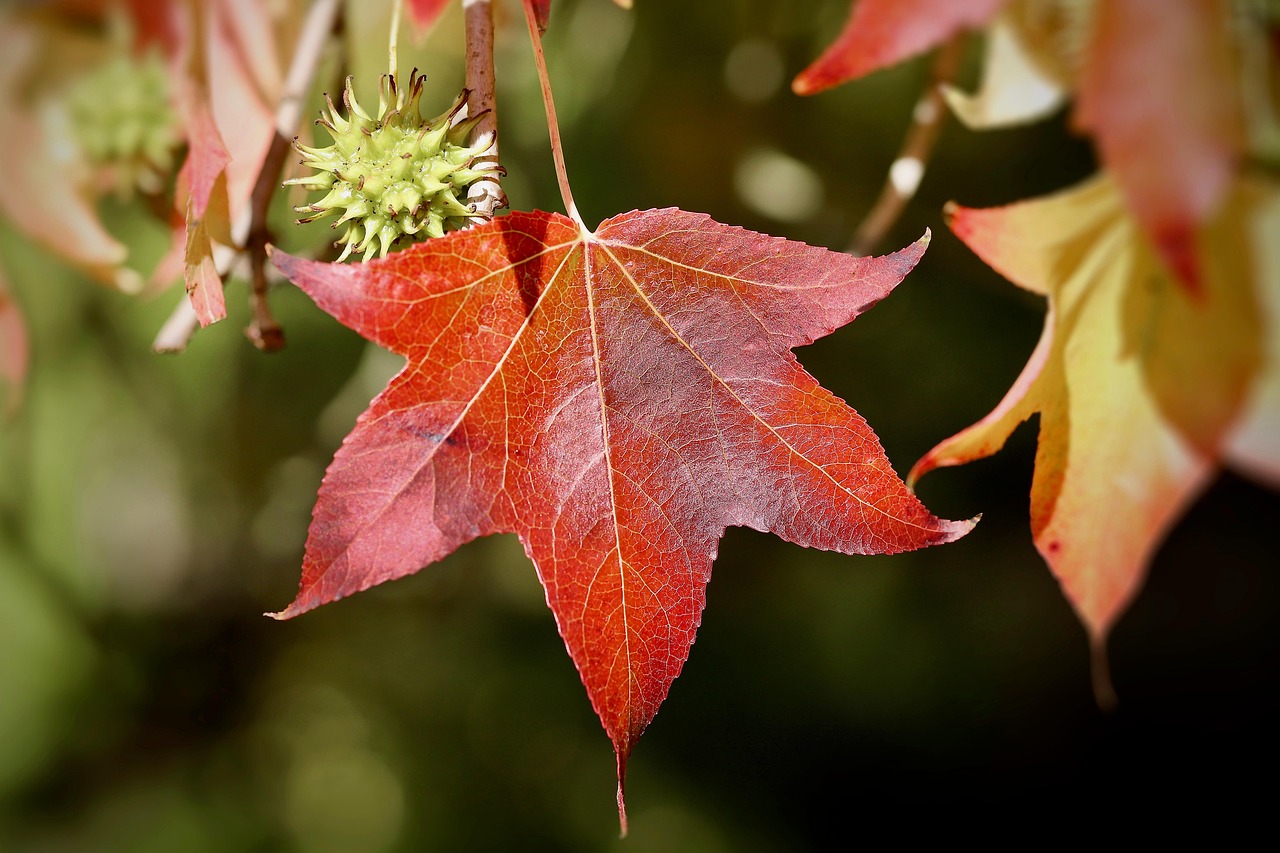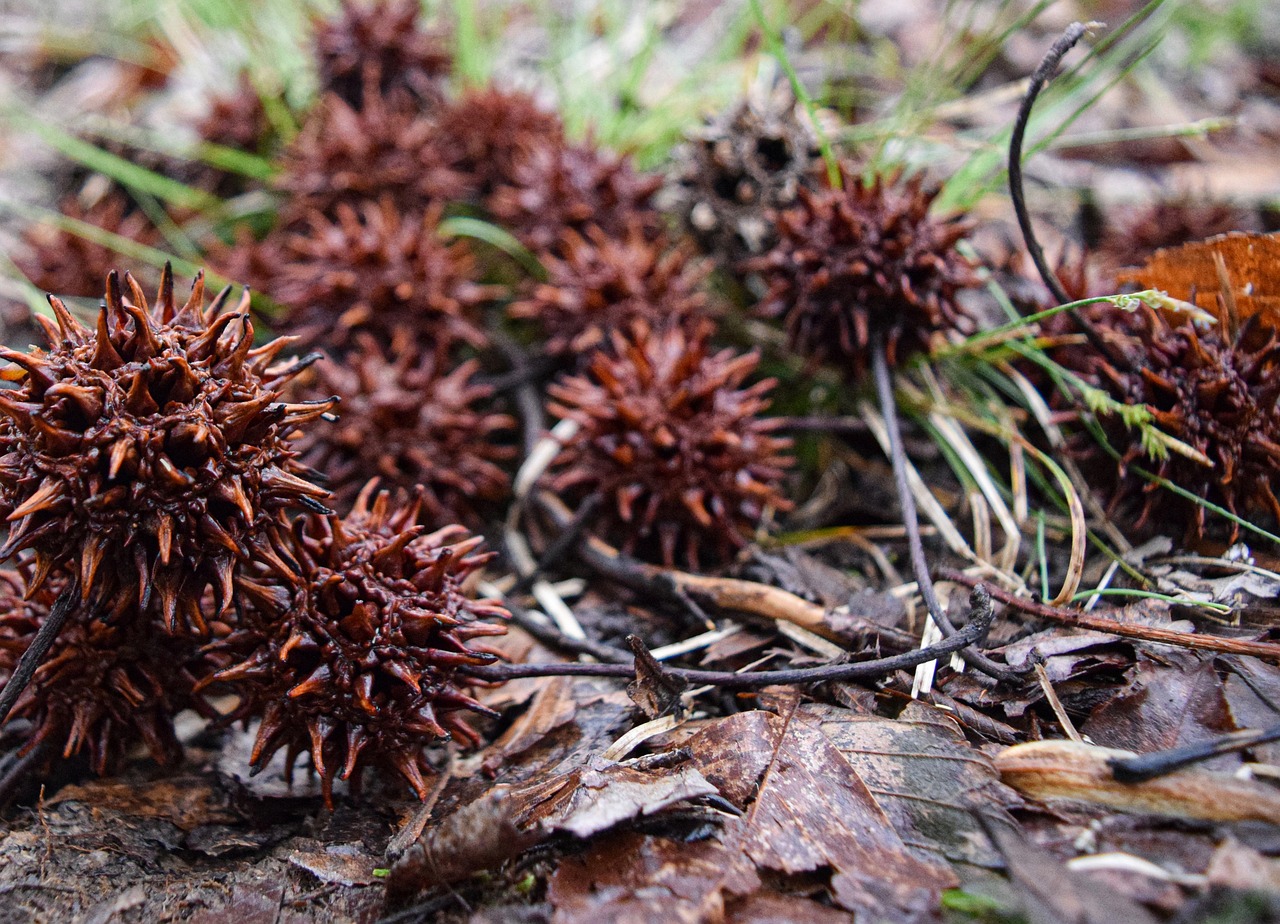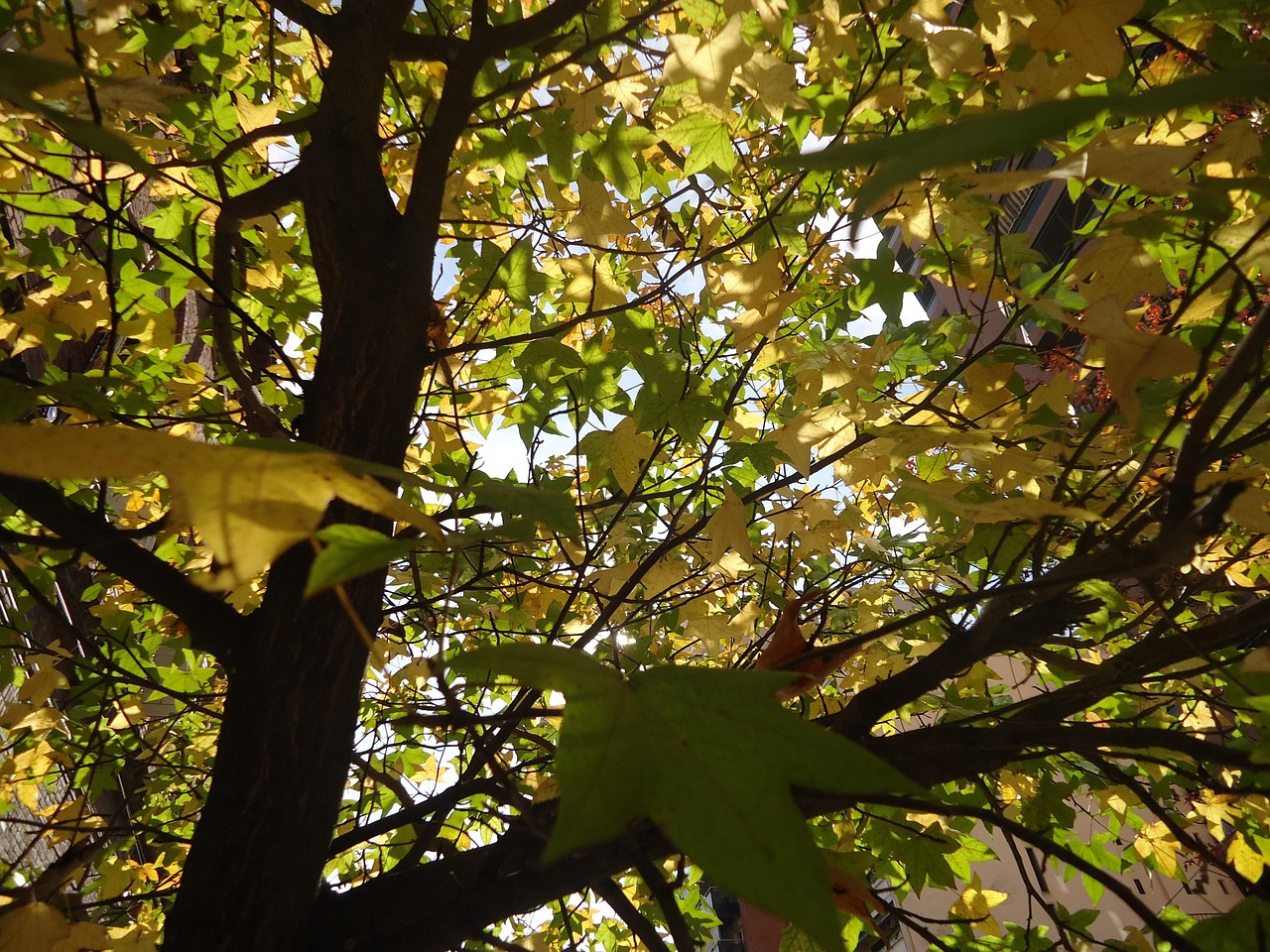The sweetgum is indeed classified as a tree. It belongs to the genus Liquidambar and is known for its distinctive star-shaped leaves and spiky fruit. This tree can grow to impressive heights, making it a significant part of many landscapes.
Understanding Sweetgum Trees

The sweetgum tree, scientifically known as Liquidambar styraciflua, is native to the southeastern United States and parts of Central America. This deciduous tree is recognized for its unique aesthetic qualities, including its star-shaped leaves that turn vibrant colors in the fall. Its growth habit and ecological importance make it a fascinating subject for both gardeners and botanists.
Sweetgum trees typically thrive in a variety of soil types, preferring moist, well-drained locations. They can grow quite tall, often reaching heights of 60 to 100 feet. The trunk can be straight and tall, with a diameter of up to 3 feet. Their dense canopy provides excellent shade, making them a popular choice for parks and residential areas.
One of the most striking features of the sweetgum is its fruit, which is a spiky ball that contains seeds. These fruits can be somewhat troublesome when they fall from the tree, as they can create a messy yard. However, they also serve as a food source for various wildlife, including birds and small mammals.
Physical Characteristics
Sweetgum trees possess several distinctive physical characteristics that set them apart from other tree species. These include:
- Leaves: The leaves are star-shaped with five to seven points, resembling a star. They are bright green in spring and summer, turning shades of yellow, orange, and red in autumn.
- Bark: The bark is gray-brown and has a distinctive rough texture with irregular ridges and furrows.
- Flowers: Sweetgum trees produce small yellow-green flowers in spring, which are not particularly showy but contribute to the overall beauty of the tree.
Habitat and Distribution
Sweetgum trees are primarily found in the eastern United States, particularly in areas with a warm climate. They are commonly located in mixed hardwood forests, along stream banks, and in wetlands. Their adaptability allows them to grow in various soil conditions, although they favor moist areas.
In addition to their native range, sweetgum trees have been widely planted in urban landscapes due to their attractive foliage and ability to provide shade. They are often used as street trees or in parks where their height can be appreciated without interfering with buildings or overhead power lines.
Cultural Significance
Sweetgum trees have cultural significance in various regions. They have been used for their wood, which is valued for its workability and beautiful grain. The wood is often used in furniture making, cabinetry, and flooring. Additionally, the fragrant resin from sweetgum trees has been utilized historically for medicinal purposes and in incense.
With their striking appearance and ecological benefits, sweetgum trees hold an important place in both nature and human landscapes. Their role as a habitat for wildlife and their use in urban environments make them an essential part of many ecosystems.
| Characteristic | Description |
|---|---|
| Height | 60 to 100 feet |
| Leaf Shape | Star-shaped with five to seven points |
| Bark Texture | Rough with irregular ridges |
| Native Range | Southeastern United States and Central America |
Ecological Importance of Sweetgum Trees
The sweetgum tree plays a crucial role in its ecosystem. It offers numerous benefits to wildlife and the environment. Understanding these ecological contributions helps highlight why this tree is valued in both natural and urban settings.
Habitat for Wildlife
Sweetgum trees provide habitat and food for various species. The dense foliage offers shelter for birds, while the seeds contained in the spiky fruit are a food source for many animals. Notable species that benefit from sweetgum trees include:
- Birds: Many birds, such as finches and sparrows, feed on the seeds during the fall and winter months.
- Mammals: Small mammals like squirrels and chipmunks also consume the seeds and use the tree for nesting.
- Insects: The flowers attract pollinators, including bees and butterflies, which are vital for maintaining biodiversity.
Soil Erosion Control
Sweetgum trees help prevent soil erosion due to their extensive root systems. These roots anchor the soil in place, especially in areas prone to heavy rainfall or flooding. By stabilizing the soil, sweetgum trees contribute to the overall health of their environment.
Carbon Sequestration
As with many trees, sweetgums play a significant role in carbon sequestration. They absorb carbon dioxide from the atmosphere and store it in their biomass. This process helps mitigate climate change by reducing greenhouse gases. The larger and healthier the tree, the more carbon it can sequester.
Uses of Sweetgum Trees
Sweetgum trees are not only ecologically important; they are also valuable for various human uses. Their wood, resin, and aesthetic qualities make them a sought-after species in multiple industries.
Wood Products
The wood of the sweetgum tree is known for its attractive appearance and durability. It is often used in the following products:
- Furniture: Sweetgum wood is commonly used to create beautiful furniture pieces due to its fine grain.
- Cabinetry: Many cabinet makers prefer sweetgum for its workability and appealing finish.
- Flooring: Sweetgum wood can be found in flooring products, offering a unique aesthetic that complements various interior designs.
Medicinal Uses
The resin of the sweetgum tree has been used traditionally for medicinal purposes. Native Americans utilized it for treating various ailments. Some potential uses include:
- Wound Healing: The resin’s antibacterial properties may aid in healing cuts and scrapes.
- Cough Relief: The resin can be used in natural remedies to alleviate coughs.
Aesthetic Value
Sweetgum trees are highly regarded for their ornamental value. They are often planted in gardens and parks for their stunning fall colors. The vibrant foliage adds beauty to landscapes during the autumn months. Additionally, their unique shape and structure can serve as focal points in garden designs.
Cultivation and Care
Cultivating sweetgum trees requires some knowledge to ensure they thrive. They prefer well-drained soil and full sunlight but can adapt to partial shade. Here are some key points to consider when planting and caring for sweetgum trees:
- Soil Requirements: While sweetgums can tolerate various soil types, they perform best in rich, moist, well-drained soils.
- Watering: Regular watering is crucial, especially during dry spells or when young. Mature trees are more drought-tolerant.
- Pruning: Pruning should be done during late winter or early spring to maintain shape and remove any dead branches.
By understanding their ecological importance, uses, and cultivation needs, individuals can appreciate sweetgum trees not only as beautiful landscape features but also as vital components of their ecosystems.

Pests and Diseases Affecting Sweetgum Trees
Like many trees, sweetgum trees are susceptible to various pests and diseases. Understanding these threats is essential for maintaining the health of the tree. By being aware of common issues, gardeners can take proactive measures to protect their sweetgum trees.
Common Pests
Several pests can affect sweetgum trees. These pests can damage leaves, branches, and even the trunk, leading to decreased vigor or death. Some of the most common pests include:
- Leaf Blister Aphids: These small insects can cause curled leaves and a sticky residue on the tree. They can weaken the tree if not controlled.
- Scale Insects: Scale insects attach themselves to the bark and suck sap from the tree. This can lead to yellowing leaves and overall decline.
- Sweetgum Lice: These insects feed on the sap and can cause leaf drop and reduced growth.
To manage these pests, it is essential to monitor the trees regularly. If an infestation occurs, various control methods, such as insecticidal soaps or horticultural oils, can be effective.
Diseases
Sweetgum trees can also be affected by several diseases. Recognizing the symptoms early can help mitigate damage. Common diseases include:
- Leaf Spot: This fungal disease causes dark spots on the leaves, which can lead to premature leaf drop.
- Cankers: Cankers are areas of dead tissue that can develop on branches and trunks. They can weaken the tree and cause dieback.
- Phytophthora Root Rot: This disease affects the roots and is often caused by overwatering or poor drainage. It leads to wilting and yellowing of leaves.
To manage diseases, proper cultural practices are crucial. Ensuring good air circulation, avoiding overhead watering, and removing infected leaves can help prevent disease spread.
Sweetgum Trees in Urban Settings

Sweetgum trees are often incorporated into urban landscapes due to their attractive appearance and shade-giving capabilities. However, there are both advantages and challenges associated with planting sweetgums in cities.
Advantages of Urban Planting
- Shade Provision: Sweetgum trees provide significant shade, helping to cool urban areas during hot months.
- Aesthetic Appeal: Their stunning fall colors enhance the beauty of city parks and streetscapes.
- Wildlife Habitat: Even in urban environments, sweetgums support local wildlife by providing food and shelter.
Challenges of Urban Planting
Despite their benefits, sweetgum trees present some challenges in urban settings:
- Fruit Drop: The spiky fruit can create a mess when it falls, leading to maintenance issues for city managers.
- Space Requirements: Sweetgum trees require ample space for their roots and canopy, which may not always be available in densely populated areas.
- Pest and Disease Management: Urban environments can exacerbate pest problems due to stress factors like pollution and limited resources.
Cultural Significance in Different Regions
The sweetgum tree holds cultural significance in various regions across its native range. Its uses extend beyond ecological benefits to include historical and cultural aspects.
Historical Uses
Throughout history, indigenous peoples have utilized sweetgum trees for various purposes:
- Medicinal Remedies: The resin was traditionally used for treating wounds and respiratory issues.
- Cultural Ceremonies: The tree was sometimes featured in rituals due to its majestic presence and natural beauty.
Modern Uses
In contemporary society, sweetgum trees continue to be valued for:
- Aesthetic Landscaping: Many homeowners and landscapers choose sweetgums for their stunning fall foliage.
- Cultural Festivals: Some communities celebrate local flora, including sweetgums, during seasonal festivals that highlight regional biodiversity.
The sweetgum tree’s combination of ecological importance, aesthetic value, and cultural significance makes it a vital component of both natural ecosystems and urban landscapes. Understanding its many facets can enhance appreciation for this remarkable tree species.
Environmental Benefits of Sweetgum Trees
Beyond their aesthetic and cultural significance, sweetgum trees provide numerous environmental benefits. These trees contribute positively to their ecosystems in several key ways:
Air Quality Improvement
Sweetgum trees play an essential role in improving air quality. Through the process of photosynthesis, they absorb carbon dioxide and release oxygen, helping to mitigate climate change by reducing greenhouse gas levels. A mature sweetgum tree can produce enough oxygen to support several people.
Soil Health Enhancement
The falling leaves of sweetgum trees enrich the soil as they decompose. This natural process adds organic matter, which improves soil structure and fertility. Healthy soil promotes the growth of various plants, contributing to biodiversity in the area.
Stormwater Management
Sweetgum trees can also assist in stormwater management. Their extensive root systems help absorb rainwater, reducing runoff and the risk of flooding. Additionally, the trees can filter pollutants from stormwater, improving the overall water quality in their vicinity.
Challenges in Sweetgum Tree Management

While sweetgum trees have many positive attributes, managing them can come with challenges. Understanding these challenges can help homeowners and land managers make informed decisions about planting and caring for sweetgum trees.
Maintenance Requirements
Sweetgum trees require regular maintenance to thrive and minimize issues associated with fruit drop and pest infestations. Some maintenance considerations include:
- Regular Pruning: To maintain their shape and encourage healthy growth, annual pruning is recommended.
- Fallen Fruit Cleanup: The spiky fruit can create a messy yard, so regular cleanup may be necessary, especially in residential areas.
- Pest Monitoring: Keeping an eye out for common pests allows for early intervention, preventing severe infestations.
Allergies and Sensitivities
Some individuals may experience allergies related to sweetgum trees. The pollen from sweetgum flowers can trigger allergic reactions in sensitive individuals. While not a significant issue for most people, it is essential for those who are allergic to be aware of this when considering planting sweetgum trees.
Final Thoughts
The sweetgum tree is indeed a remarkable species, classified as a tree due to its growth habits and physical characteristics. Its unique beauty, ecological benefits, and cultural significance make it an important component of both natural and urban environments.
From providing shade and habitat for wildlife to enhancing air quality and soil health, sweetgum trees play a vital role in their ecosystems. While there are challenges associated with their maintenance and potential allergens, the benefits often outweigh the drawbacks.
As communities continue to prioritize green spaces and biodiversity, understanding the value of sweetgum trees will be essential. By appreciating their contributions and managing them responsibly, gardeners, homeowners, and city planners can ensure that sweetgum trees thrive for generations to come.
In conclusion, the sweetgum tree exemplifies the beauty of nature’s diversity. Its classification as a tree is only the beginning of its story—one that intertwines with ecological health, cultural heritage, and urban beauty. By fostering a deeper understanding of this species, we can promote its preservation and celebrate its unique place in our world.
